How to choose the right wallpaper?

Today the market of finishing materials is replete with a variety of samples with their own characteristics and advantages. However, the good old wallpapers are still among the most popular and demanded ones. Nowadays, their assortment has acquired such a scale that it will be possible to find the ideal options for any interior, style and, of course, budget. Today we will talk about how to choose the right wallpaper for your home.

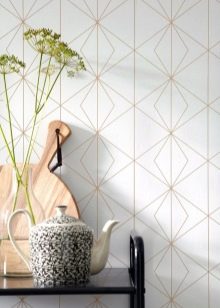

Which ones to take?
As mentioned above, today the assortment of various wallpapers is so large that you can simply get lost in it. Still, the search for suitable canvases is not too difficult. The main thing is to rely on the conditions in which they will be. It is on the basis of a particular room that coverings of various types are most often chosen.
For example, for a hall, corridor or hallway, it is recommended to select more wear-resistant washable options that are not afraid of dampness and moisture. These properties of the canvases for these rooms are due to the fact that pollution of the wall decoration occurs very often in them.
If the wallpaper in the hallway cannot be washed, then they will quickly lose their attractiveness and ruin the atmosphere.

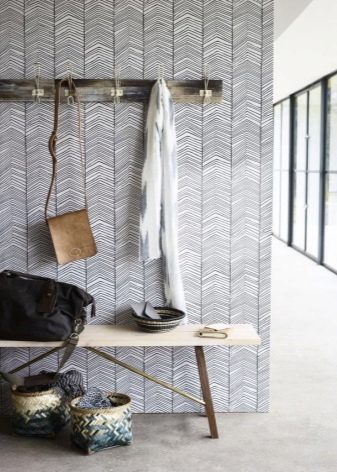
More difficult is the selection of the ideal wallpaper for the living room, since this room is rightfully recognized as the "face" of the home and its business card. In the hall, you can use coatings of various shades. Moreover, many owners choose expensive woven wallpaper with a characteristic fibrous structure to decorate such premises. In this case, there are no serious prohibitions. The main thing is that the finishing materials are ideally suited to the interior in style and color.
As for the bedroom, for such a room, you should choose calmer and neutral canvases of discreet colors. It is recommended to give preference to durable and high-quality canvases. Do not forget that the atmosphere in the bedroom should contribute to pacification and relaxation, therefore, large and “flashy” prints or patterns should be discarded so as not to disturb the nervous system for the coming sleep.

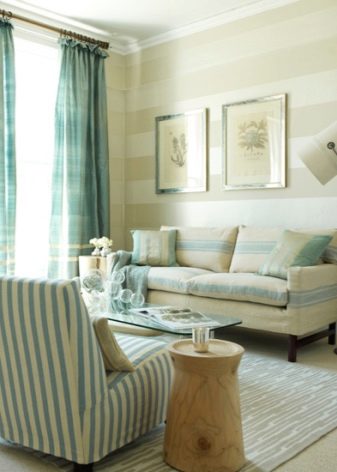
High-quality wallpapers made from environmentally friendly and absolutely safe materials will be the best for a children's room. They should not contain harmful compounds, because you do not want to harm the young household. It is advisable to choose durable and wear-resistant products and glue them so that they hold as tightly as possible. This is due to the fact that little fidgets often pick the wall decoration, which can seriously harm the canvases.
Of course, the main answer to the question of which wallpaper is worth taking for your home is that it should be of high quality and as attractive as possible. In addition, when determining for yourself which coatings are right for you, you should familiarize yourself with their varieties. This will make it easier and easier to determine the optimal specimens.
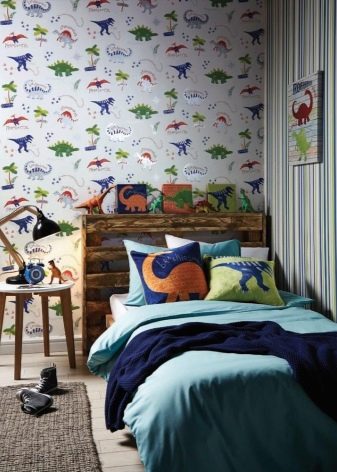
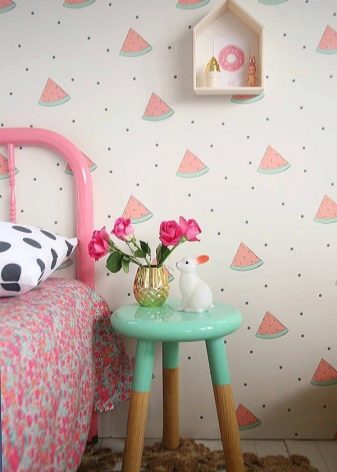
Views
Today, the range of finishing materials includes a considerable list of wallpapers with different properties and characteristics. If earlier in stores there were only simple paper options, at the moment the buyer is not so limited in his choice. Let's take a closer look at different types of wallpapers and their distinctive features.
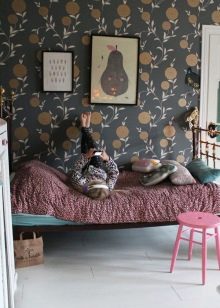

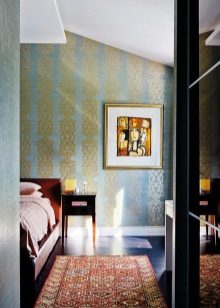
Paper
And yet, some of the simplest and most familiar to customers are the good old paper canvases. Such coatings can boast that there are no toxic and harmful compounds in their composition, but there is pure cellulose, which is an absolutely safe and environmentally friendly material.
Recently, the popularity of such finishing materials has perceptibly faded away due to their unreliable texture and weak wear resistance. It is very easy to damage and tear such canvases, but it is impossible to get rid of the defect that has appeared. This suggests that after a short period of time, paper products will have to be removed and new coatings glued in their place.

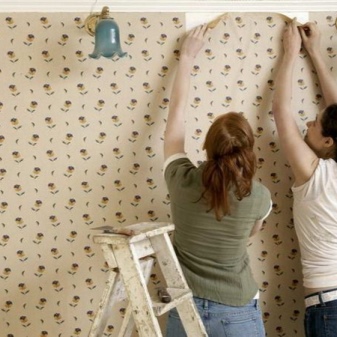
Moreover, they can not be glued in all rooms. For example, in a kitchen or hallway, the service life of these models will be noticeably reduced. And the thing is that paper wallpapers not only get dirty easily, but are also afraid of moisture, so they cannot be washed.
Due to such serious shortcomings, modern manufacturers have developed more thoughtful and practical options:
- Duplex. Two-layer models, in which only the base remains paper, and on top of it there is a decorative coating with drawings and patterns;
- Simplex. Such products are single-layer with drawings and prints applied to them.


Vinyl
Vinyl wallpapers are more popular today. Such specimens consist of two main layers - textile or paper, as well as decorative (usually consisting of polyvinyl chloride).
Thanks to the practical top layer, these canvases can easily withstand various types of dirt, mechanical damage and aggressive sunlight, leading to fading of the coatings.
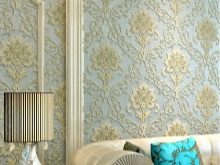
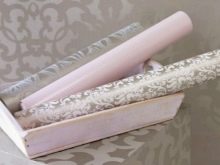
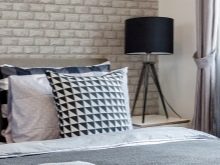
There are several types of vinyl sheets. Who knows, maybe in a couple of years there will be even more of them, because the production of such coatings does not stand still and is constantly being modified.
Today, the following types of vinyl wallpaper can be found in stores:
- Compact vinyl. These are products with imitation of dense and heavy materials, such as plaster, brick or stone;
- Heavy vinyl. Such finishing materials are more often used in rooms with not the most even walls. They perfectly "mask" many floor defects;

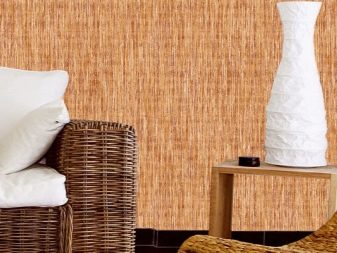
- Chemical embossed. Such products are recommended for use in apartments that are not on the sunny side. They are not afraid of ultraviolet rays and they are quite easy to clean;
- Silk-screen printing. These types of vinyl wallpaper are distinguished by an unobtrusive sheen reminiscent of silk. It is recommended to use them in rooms with perfectly flat walls.
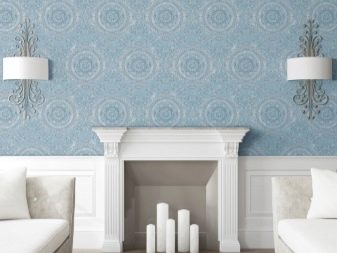
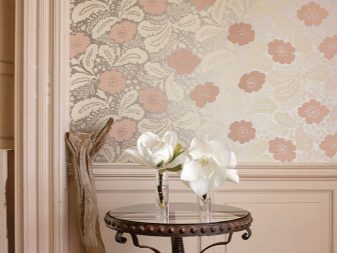
Glass fiber
A fashionable trend today is such a finishing material as fiberglass. The main distinguishing feature of such coatings is that they are based on special woven fiberglass threads that turn traditional canvases into a strong, reliable and durable "bastion".
The main advantages of such materials are:
- their environmental friendliness;
- non-flammability;
- increased strength and resistance to mechanical damage;
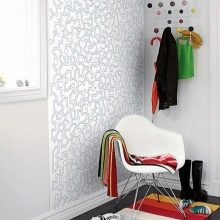
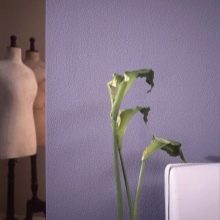
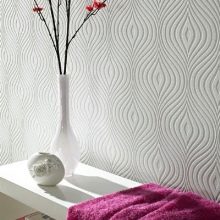
- chic assortment;
- beautiful appearance;
- durability.
In addition, fiberglass wallpaper is breathable, so mold or mildew will never form on walls with this finish.

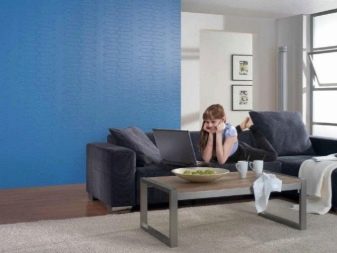
Non-woven
These types of wallpapers are also very popular and widespread. They have a non-woven base. This material consists of viscose, which gives the fabrics additional elasticity and pliability.
Non-woven coverings can be painted more than once. Thanks to this opportunity, the owners will be able to radically change the shade of the interior when they want it. In addition, for pasting them, it is not necessary to coat them with an adhesive mixture. You just need to glue the wall and apply canvases to it.
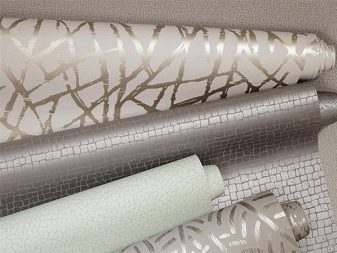
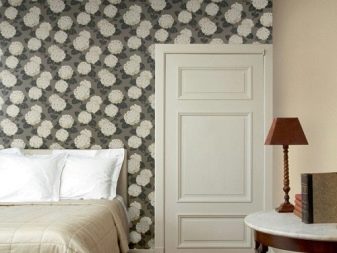
There are two types of non-woven wallpaper:
- vinyl-coated canvases;
- products made entirely of non-woven fabric.
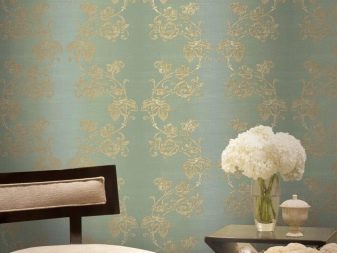
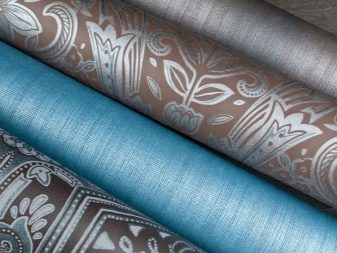
Woven
Textile fabrics are made from paper or non-woven fabric, but are covered with various woven materials on top. Silk, linen, velor, felt and jute are used in production. These materials are environmentally friendly and look amazing. Such canvases are both wide and narrow.
However, they also have their drawbacks. They are quite expensive, easily get dirty and absorb odors. Because of this, it is by no means worth glueing them in the kitchen, in the hallway or on the balcony. There they will not last long.
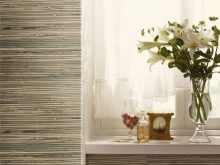
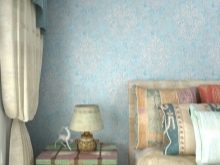
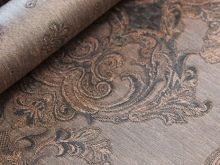
Liquid
These types of wallpapers have appeared relatively recently, but have already become popular among consumers. Such finishing materials are sold in buckets and are a dry powder that must be diluted with water and then applied to the walls. Many people confuse liquid wallpaper with plaster.
With the help of such options, you can hide many wall defects and even their irregularities.
Over the liquid wallpaper, you can apply paint of different colors and repaint the walls from time to time, updating and refreshing the interior.
The above types of wallpaper are currently the best sellers. They are preferred by many buyers. They also include original photowall-paper with a variety of patterns on different topics. Their qualities and characteristics largely depend on the base and materials of the composition.
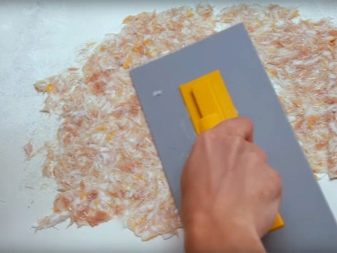

Materials (edit)
Modern wallpapers are made using the following materials:
- cellulose;
- non-woven fabric;

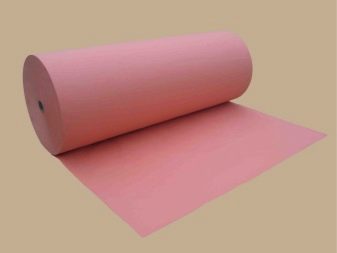
- vinyl;
- acrylic;
- fiberglass;

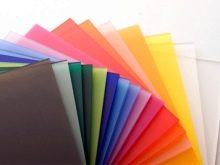
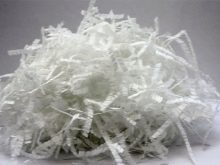
- natural woven fibers;
- metal and foil.
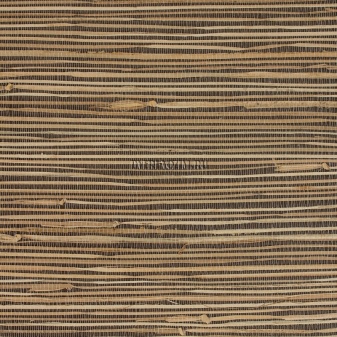
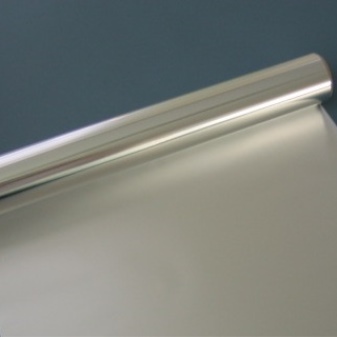
Colors
The harmony and organic nature of the interior largely depends on the correct choice of wallpaper colors. In this case, one of the most important roles is played by the degree of natural illumination of the space and the direct location of the dwelling. For example, in rooms located on the south side, as a rule, it is always light and warm. They can be used to glue canvases in cool shades, such as blue, gray, green, white or beige. As for the darker rooms located on the north side, light wallpapers are more suitable for them. For example, it can be lemon, light beige and even golden specimens.
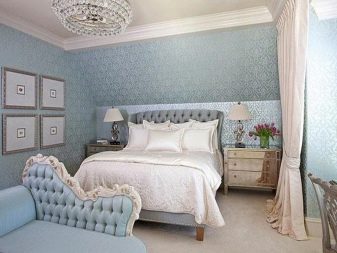

The functional purpose of the room is also important:
- For the corridor and hallway, it is better to choose dark (but not too much) wallpapers that are not easily soiled, as they can quickly get dirty in such conditions;
- Both dark and light canvases are equally suitable for the hall. It all depends on the style of the interior and the level of natural light in the living room;
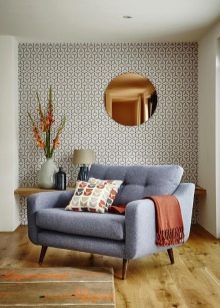
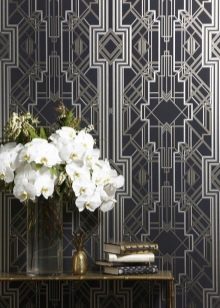

- In children's rooms, you can use more colorful and positive tones, but do not overload such rooms with a large number of "flashy" colors, otherwise they will excite the children's nervous system and prevent the little owner of the room from falling asleep quickly. In such spaces, you can use interesting canvases with cartoons and various kind drawings;
- As for the bedroom, everything is very simple here: the color of the wallpaper should be as calm, neutral or pastel as possible. The interior of such a room is aimed at contributing to calmness and tranquility, and such paints will be an excellent solution for this.
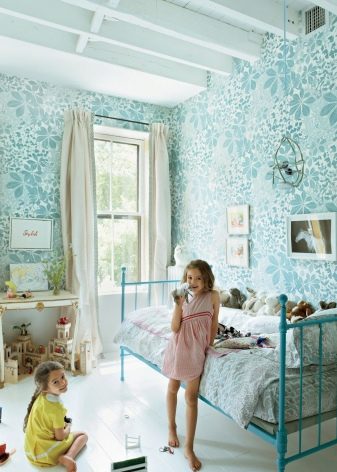
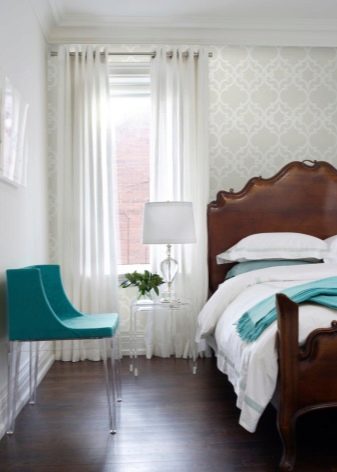
We take into account the area
The lower the height of the walls and the more compact the room, the lighter the wallpaper should be. It is recommended for such rooms to select pastel pieces or calm rolls of cozy and warm colors. They can be monochromatic or decorated with small, discreet images. For example, in a small room with an area of 12 sq. m soft peach canvases will look great, especially if it is located on the north side.
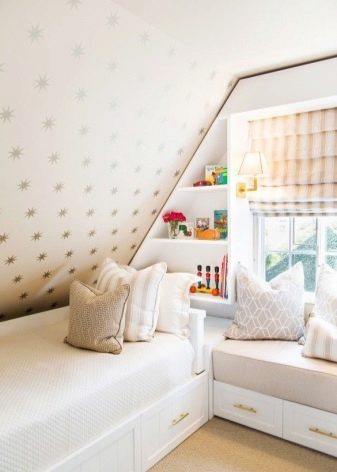
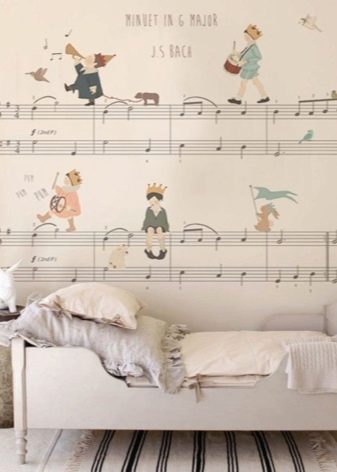
For a studio apartment, you can use wallpaper of different colors. With their help, it will be possible to make zoning of a single space, choosing canvases of different tones for pasting different walls.For example, contrasting materials should be glued at the computer desk to separate the work area from the surrounding environment. Similar solutions can be used for a one-room apartment.
In a large room with chic high ceilings, wall coverings in rich and rich colors are suitable. They can be decorated with large and bright designs or prints. With the help of such a finish, it will be possible to give the interior a solemnity, thereby softening its overall image.

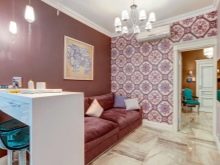

Quality
One of the main criteria in choosing the right wallpaper is its quality. To date, all canvases are divided not only by design and composition, but also by their functionality. Some of the best quality are vinyl rolls and fiberglass models. The first varieties have a non-woven base with foamed vinyl. In them, the front side is distinguished by a relief print. They can be painted, thereby changing the image of the room. It is permissible to repaint vinyl wallpaper 7-10 times.
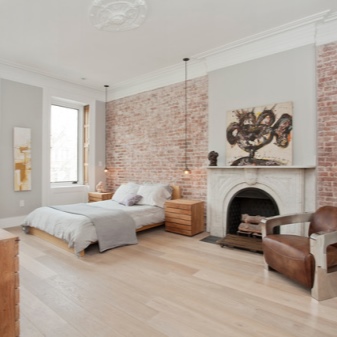
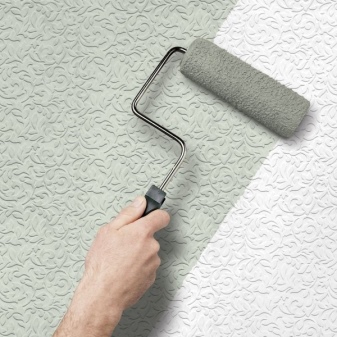
As for moisture resistance, the following types of wallpaper are distinguished:
- Simple. They are not designed to interact with water, so they can only be glued in rooms where contact with moisture is excluded;
- Waterproof. Such canvases can be processed with a damp sponge;
- Washable. It is permissible to use various cleaning agents in cleaning these wallpapers.
If chlorine-containing compositions are supposed to wash the coating, then it is worth choosing expensive materials of improved quality, characterized by maximum strength and wear resistance.
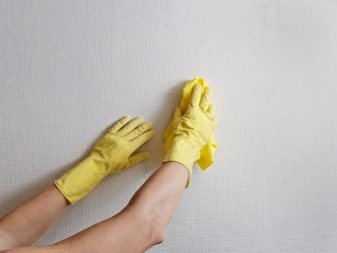

For kids
As mentioned at the beginning, wallpaper for children's rooms, first of all, should be environmentally friendly and absolutely safe. They should not release harmful compounds under any circumstances.
In addition, wallpapers with the following qualities and features are perfect for young users:
- beautiful options for positive and cheerful tones;
- coverings, complemented by interesting prints, images of cartoon characters, animals, flowers and other similar compositions;
- dense options that do not let in excess noise that can interfere with the child's sleep;
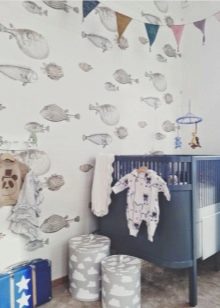

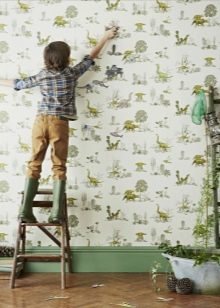
- wallpaper that retains heat so that the baby is as comfortable as possible in his room;
- for very little fidgets, you can pick up special canvases on which you can draw;
- coatings with luminous images (they must be of the highest quality and be made from safe materials) will be an excellent solution.
When choosing wallpaper for a nursery, do not hesitate to ask the opinion of the little owner of the room. Listen to his desires, and then the environment will definitely suit his taste and will give him a good mood.
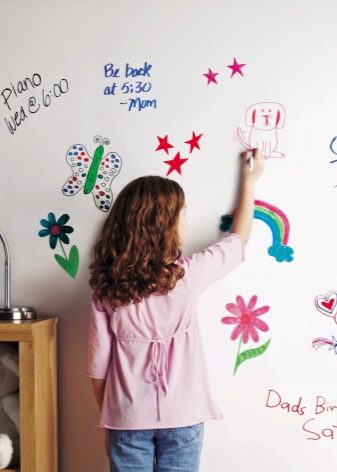

Which ones keep you warm better?
The following types of wallpaper keep warm in the room best:
- natural fiber options, such as textiles;
- non-woven options with a woven layer;
- multilayer paper canvases.
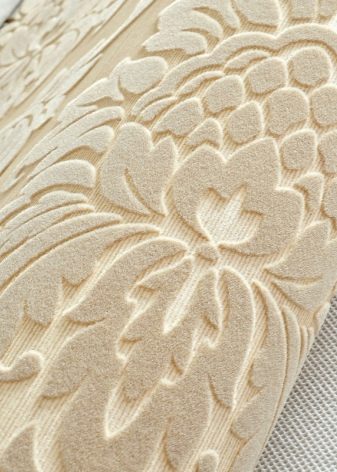
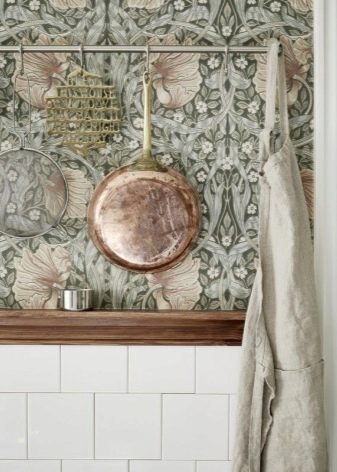
We select in the interior
Wallpaper should fit perfectly into a particular interior. So, if the room contains uneven or curved walls with many defects, then it is recommended to buy denser and heavier canvases. It is better to give preference to options with embossed surfaces, embossing or a variety of prints that will distract attention from the imperfections of floors. Due to their structure, such finishing materials will successfully hide everything that is not worth showing in the setting.
Do not forget that the wallpaper must necessarily look harmonious in combination with curtains. There is nothing difficult here. The color of walls and curtains should not be exactly the same. It is desirable that it differ by at least a couple of tones, otherwise the interior will seem boring. Against the background of overly colorful wallpaper, it is worth hanging curtains, also decorated with prints, but their brightness and luridness should be a little more restrained.



Furniture should also look organic against the background of the wallpaper.For example, in rooms that are too bright and catchy, it is better to use more neutral and monochromatic interior items and, conversely, if you have picked up colorful and colorful furniture, then the wall decoration should be classic, neutral or pastel. For example, against the background of furniture of a dark shade of walnut color, it is worth gluing beige or milky wallpaper.
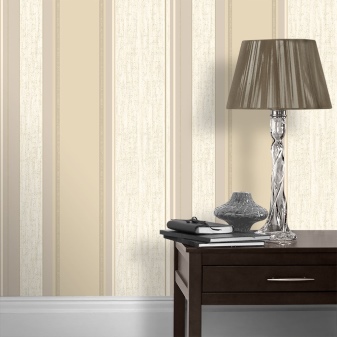

Contrasting solutions are not prohibited either. For example, against the background of black wallpaper, snow-white objects will look great, and against a background of white ones - black ones. Such harsh combinations are especially common in modern interiors.
Try not to overload the room with a lot of small prints. Moderation and caution should be observed in decorating the walls with such canvases, otherwise the ensemble will turn out to be too heavy and annoying.
It is better to take one of the walls in the room under such wallpaper. Thus, you will highlight this or that zone and emphasize its originality, without making the interior colorful.

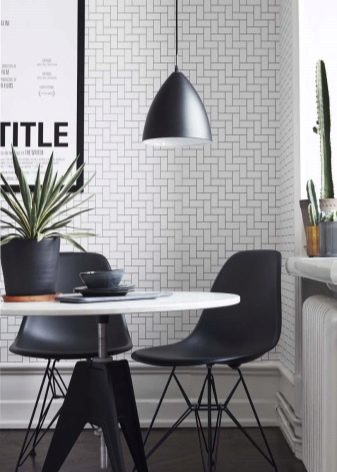
The best firms
Today, there are many different manufacturers on the market that produce high-quality and beautiful wallpapers for every taste and color.
However, from such a wide variety, it is worth highlighting some well-known companies:
- Photo wallpaper factory Alfresco (Russia), featuring a chic assortment of bright and original canvases with unique and "live" compositions;
- Wallpaper factory "Avangard" (Russia), which produces non-woven and vinyl canvases on a paper basis for painting;
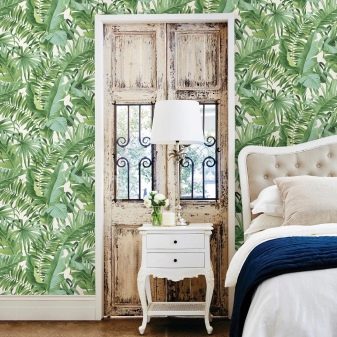
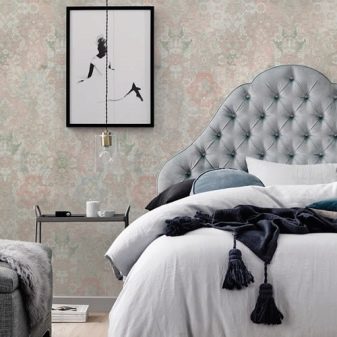
- Brand name Sanderson (England), which produces spectacular and high quality plain and wallpaper with unusual prints;
- Limonta (Italy), produces expensive but beautiful vinyl wallpapers with elegant and exclusive patterns;
- Casamance (France) is a well-known brand, in the range of which even ordinary paper canvases have a unique design and excellent quality.
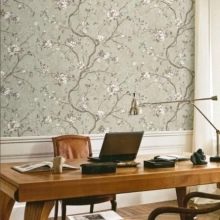
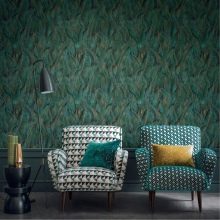
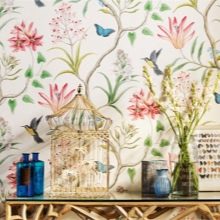
Design Tips
It is worth choosing these or those wallpapers, relying on the advice of experienced home interior designers:
- First of all, the choice of optimal canvases should be based on the conditions in which they will be located, as well as the footage and location of the room. For example, for rooms with high humidity, it is worth taking dense and wear-resistant options, for small rooms - light wallpapers, for rooms on the north side - specimens of warm colors and further on the list. Only in this way the interior will turn out to be harmonious and really thought out;
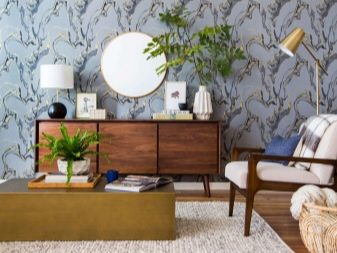

- Don't forget about color combinations. Wallpaper should match both furniture and decorative items in the room. You should not paste over the entire space with overly variegated and flashy materials, even if you really like them, otherwise over time they will begin to annoy you;
- Use wallpaper for zoning and highlighting different areas in the room. For example, you can paste over the wall behind the bed in the bedroom with contrasting options to draw attention to it and emphasize the organic nature of the sleeping area.
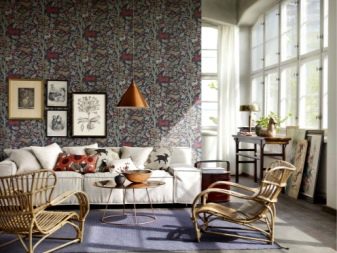
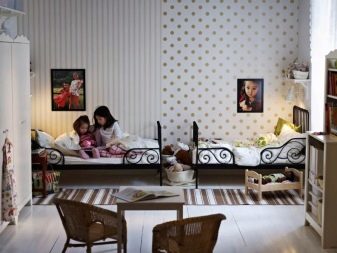
Interior design examples
Correctly selected wallpaper looks attractive in any home: in a private house, and in a new building, and a compact "Khrushchev".
So, against the background of the original cork wallpaper, glued in a niche behind the bed in a snow-white room, furniture should be placed in natural natural shades, such as linen.
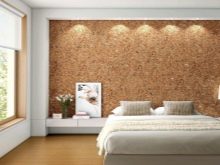
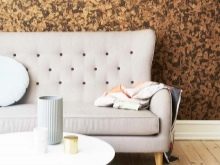
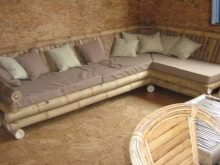
Against the background of snow-white wallpaper with gray or pale blue graceful patterns, it is recommended to place furniture in neutral and soft tones. For example, it can be a sofa, cabinets, carpets and lamps in soft caramel or crème brulee shades.
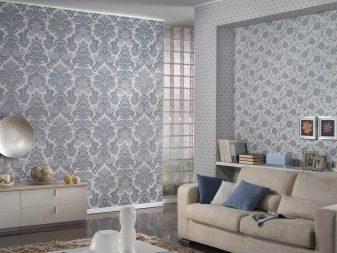
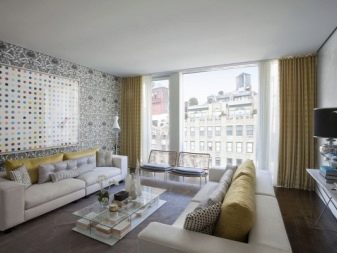
In a small "Khrushchev", you can use not only smooth, but also embossed canvases under a brick. It is better to turn to snow-white options. In rooms with such wall decoration, you can make a non-massive multi-level ceiling with built-in LED backlighting in a soft blue shade. Furniture in these conditions should also be kept in light and neutral colors.
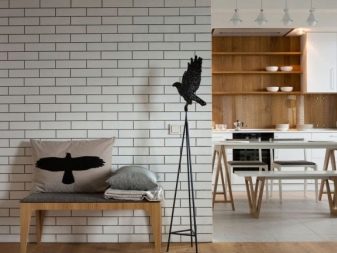

In a private house, you can use absolutely any wallpaper.For example, in a spacious, artsy living room with luxurious wooden furniture and a white fireplace decorated with stucco, you should glue smooth peach or yellow canvases that highlight the texture of natural wood and snow-white stucco ornaments.
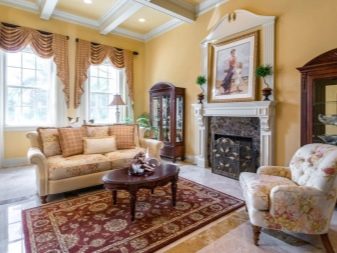
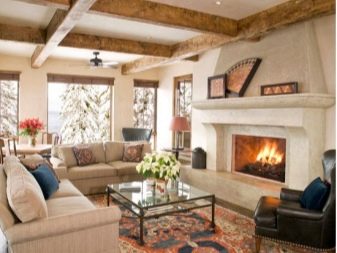
White wallpapers are universal. Moreover, they can be made in the form of panels, wavy lines or have embossed surfaces. They can be combined with dark floors and furniture of any color, both light and contrasting dark. However, too many white elements must be diluted with bright accents.
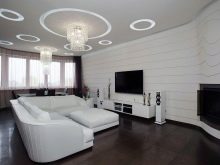
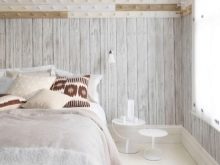
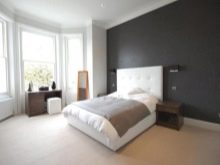
You will learn how to properly glue the wallpaper in the next video.













The comment was sent successfully.